Most people might think of MWA Grandmaster Bill Pronzini as a novelist, but he’s also had a long and distinguished career as a writer of short fiction. The Cemetery Man and Other Darkside Tales brings together 19 stories (two of them collaborations with Barry N. Malzberg) from five decades. Many of them are quite dark, but the title story offers a glimpse of humanity where it’s not expected. “Hooch” is dark, too, but also darkly humorous. It contains some good advice to aspiring writers who might be tempted to talk too much about that book they’re supposedly working on. There’s an excellent introduction by Ed Gorman in which he discusses all the stories.
Warning: Creating default object from empty value in /usr/home/kbsweb/public_html/ms20210510.mysteryscenemag.com/plugins/cck_storage/custom/custom.php on line 36
This Perfect Crime collection by Tracy Knight has 13 stories and a fine introduction by Ed Gorman. Having appeared in several anthologies alongside Knight, I can speak to the power of his stories. “Mother Cloud, Father Dust” is one that might still be haunting you when Father’s Day comes around again. “Glory Bluff” is a wrenching story about a man who plans to kill his daughter and himself. It doesn’t end well for everyone. These are well-crafted and unsettling stories.

The years immediately after the World Wars were times of change for England with culture and social reform moving faster than many were prepared to accept.
The involving stories of Downton Abbey set in post WWI explore this.
Now the series Grantchester shows the aftermath of WWII on the English countryside. Grantchester airs at 10 p.m. Sundays from Jan. 18, 2015, through Feb. 22 on PBS. Of course, check your local listings.
And yes, in some markets, that means Grantchester follows Downton Abbey, which gives viewers double examples of how England recovered after these wars.
And Grantchester is definitely worth adding to your viewing schedule.
Grantchester is based on James Runcie's novel Sidney Chambers and the Shadow of Death, which has been called "the coziest of cozy murder mysteries."
Frankly, I disagree.
True, Grantchester is set in a time that many look back at as a simpler time.
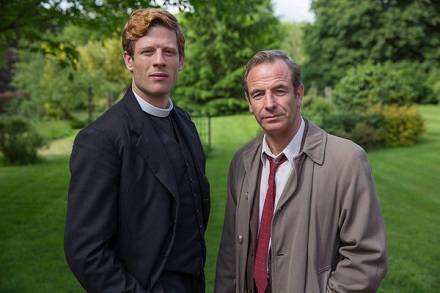
But there was nothing simpler about this era. Women and minorities had restrictions on their lives; being gay was illegal; the death penalty was enforced.
Yet Grantchester weaves in these social changes with a light approach and a sense of humor that works quite well.
This was a time when the local vicar was the pillar of the community.
But few communities had a vicar as worldly—and as easy on the eyes—as the Rev. Sidney Chambers, played so well by James Norton (Happy Valley, Death Comes to Pemberley).
Sidney is a war hero, and familiar with the human frailties of jealousy, passion, revenge, and prejudice as he has experienced each of these.
Part of the theme of Grantchester is Sidney trying to find solace in the religious life while not denying the secular world.
And of course there are the murders he helps solve, assisting local Inspector Geordie Keating (Robson Green, Wire in the Blood).
The two men eventually will work well together, as they become bound by respect and past experiences. People naturally confide in a vicar, so Sidney's involvement is organic to the story. Plus, "As a priest, isn't everything our business?" says Sidney.
Norton shows Sidney as a complicated man, yearning to help others as he finds his own salvation. Green elevates any role he is in and his return is most welcomed.
With Foyle's War in its last season, Grantchester's run is well timed, and it also soon becomes addictive viewing.
Photos: Top, James Norton; center, Robson Green and James Norton. PBS photos

The awards season officially begins today.
The Mystery Writers of America announced this morning the nominees for the 2015 Edgar Allan Poe Awards, honoring the best in mystery fiction, nonfiction, and television published or produced in 2014.
The announcement coincides with the 206th anniversary of the birth of Edgar Allan Poe.
The Edgar Awards will be presented to the winners during the 69th Gala Banquet, Wednesday, April 29, 2015, at the Grand Hyatt Hotel, New York City.
There were a lot of excellent mystery novels and thrillers published last year—a testament, I think, to how the genre continues to evolve and get better each year.
Mystery Scene congratulates each of the nominees.
BEST NOVEL
This Dark Road to Mercy by Wiley Cash (HarperCollins Publishers – William Morrow)
Wolf by Mo Hayder (Grove/Atlantic/Atlantic Monthly Press)
Mr. Mercedes by Stephen King (Simon & Schuster/Scribner)
The Final Silence by Stuart Neville (Soho Press)
Saints of the Shadow Bible by Ian Rankin (Hachette Book Group/Little, Brown)
Cop Town by Karin Slaughter (Penguin Randomhouse/Ballantine Books)
BEST FIRST NOVEL BY AN AMERICAN AUTHOR
Dry Bones in the Valley by Tom Bouman (W.W. Norton)
Invisible City by Julia Dahl (Minotaur Books)
The Life We Bury by Allen Eskens (Prometheus Books/Seventh Street Books)
Bad Country by C.B. McKenzie (Minotaur Books)
Shovel Ready by Adam Sternbergh (Crown Publishers)
Murder at the Brightwell by Ashley Weaver (Minotaur Books)
BEST PAPERBACK ORIGINAL
The Secret History of Las Vegas by Chris Albani (Penguin Randomhouse/Penguin Books)
Stay With Me by Alison Gaylin (HarperCollins Publishers/William Morrow)
The Barkeep by William Lashner (Amazon Publishing/Thomas and Mercer)
The Day She Died by Catriona McPherson (Llewellyn Worldwide/ Midnight Ink)
The Gone Dead Train by Lisa Turner (HarperCollins Publishers/William Morrow)
World of Trouble by Ben H. Winters (Quirk Books)
BEST FACT CRIME
Kitty Genovese: The Murder, the Bystanders, the Crime that Changed America by Kevin Cook (W.W. Norton)
The Savage Harvest: A Tale of Cannibals, Colonialism, and Michael Rockefeller's Tragic Quest for Primitive Art by Carl Hoffman (HarperCollins)
The Other Side: A Memoir by Lacy M. Johnson (Tin House Books)
Tinseltown: Murder, Morphine, and Madness at the Dawn of Hollywood by William Mann (HarperCollins Publishers)
The Mad Sculptor: The Maniac, the Model, and the Murder that Shook the Nation by Harold Schechter (Amazon Publishing)
BEST CRITICAL/BIOGRAPHICAL
The Figure of the Detective: A Literary History and Analysis by Charles Brownson (McFarland & Company)
James Ellroy: A Companion to the Mystery Fiction by Jim Mancall (McFarland)
Kiss the Blood Off My Hands: Classic Film Noir by Robert Miklitsch (University of Illinois Press)
Judges & Justice & Lawyers & Law: Exploring the Legal Dimensions of Fiction and Film by Francis M. Nevins (Perfect Crime Books)
Poe-Land: The Hallowed Haunts of Edgar Allan Poe by J.W. Ocker (W.W. Norton – Countryman Press)
BEST SHORT STORY
“The Snow Angel” – Ellery Queen Mystery Magazine by Doug Allyn (Dell Magazines)
“200 Feet” – Strand Magazine by John Floyd (The Strand)
“What Do You Do?” – Rogues by Gillian Flynn (Penguin Randomhouse Publishing – Ballantine Books)
“Red Eye” – FaceOff by Dennis Lehane vs. Michael Connelly (Simon & Schuster)
“Teddy” – Ellery Queen Mystery Magazine by Brian Tobin (Dell Magazines)
BEST JUVENILE
Absolutely Truly by Heather Vogel Frederick (Simon & Schuster Books for Young Readers)
Space Case by Stuart Gibbs (Simon & Schuster Books for Young Readers)
Greenglass House by Kate Milford (Clarion Books – Houghton Mifflin Harcourt Books for Young Readers)
Nick and Tesla’s Super-Cyborg Gadget Glove by “Science Bob” Pflugfelder and Steve Hockensmith (Quirk Books)
Saving Kabul Corner by N.H. Senzai (Simon & Schuster – Paula Wiseman Books)
Eddie Red, Undercover: Mystery on Museum Mile by Marcia Wells (Houghton Mifflin Harcourt Books for Young Readers)
BEST YOUNG ADULT
The Doubt Factory by Paolo Bacigalupi (Little, Brown Books for Young Readers)
Nearly Gone by Elle Cosimano (Penguin Young Readers Group – Kathy Dawson Books)
Fake ID by Lamar Giles (HarperCollins Children’s Books - Amistad)
The Art of Secrets by James Klise (Algonquin Young Readers)
The Prince of Venice Beach by Blake Nelson (Little, Brown Books for Young Readers)
BEST TELEVISION EPISODE TELEPLAY
“The Empty Hearse” – Sherlock, Teleplay by Mark Gatiss (Hartswood Films/Masterpiece)
“Unfinished Business” – Blue Bloods, Teleplay by Siobhan Byrne O’Connor (CBS)
“Episode 1” – Happy Valley, Teleplay by Sally Wainwright (Netflix)
“Dream Baby Dream” – The Killing, Teleplay by Sean Whitesell (Netflix)
“Episode 6” – The Game, Teleplay by Toby Whithouse (BBC America)
ROBERT L. FISH MEMORIAL AWARD
“Getaway Girl” – Ellery Queen Mystery Magazine By Zoë Z. Dean (Dell Magazines)
GRAND MASTER
Lois Duncan
James Ellroy
RAVEN AWARDS
Ruth & Jon Jordan, Crimespree Magazine
Kathryn Kennison, Magna Cum Murder
ELLERY QUEEN AWARD
Charles Ardai, Editor & Founder, Hard Case Crime
THE SIMON & SCHUSTER - MARY HIGGINS CLARK AWARD
(Presented at MWA’s Agents & Editors Party on Tuesday, April 28, 2015)
A Dark and Twisted Tide by Sharon Bolton (Minotaur Books)
The Stranger You Know by Jane Casey (Minotaur Books)
Invisible City by Julia Dahl (Minotaur Books)
Summer of the Dead by Julia Keller (Minotaur Books)
The Black Hour by Lori Rader-Day (Prometheus Books – Seventh Street Books)
 A missing girl shakes up the NYPD
A missing girl shakes up the NYPD
Ruth Cruger, age 18, was last seen on February 13, 1917, leaving her residence on Claremont Avenue in Upper Manhattan. She was on her way to pick up a pair of ice skates that she had left off to get sharpened at a motorcycle repair shop near her house. When she failed to return home that evening her father notified the NYPD that his daughter was missing. Detectives took the information but, as was their practice, let 24 hours pass before acting on the complaint.
A day later, the motorcycle repair shop owner, an Italian immigrant named Alfred Cocchi, admitted to police that Ruth had picked up her ice skates, but said that he did not know where she went after that. A perfunctory search of Cocchi’s garage yielded negative results. Despite the fact that Cocchi left town suddenly the next day, several patrolmen assigned to the Motorcycle Squad came forward to vouch for his honesty.
The police concluded that Ruth had either left home of her own accord or had been abducted by white slavers who had shipped her off to Cuba (although there was no evidence to suggest either theory was true).
Her father asked Manhattan District Attorney Edward Swann to initiate a separate investigation. Swann agreed to question Cocchi’s wife. After meeting with Mrs. Cocchi, he reported that he expected both her husband and Ruth would show up very soon. He had reason to be optimistic. The vast majority of missing girls reported to the police returned home of their own volition.
But Mrs. Grace Humiston, a lawyer and crusader against white slavery, was not convinced that things would work out. Her persistent badgering of detectives assigned to the case finally got the attention of Police Commissioner Arthur Woods. He agreed to have Cocchi’s shop searched a second time and let her watch. This time detectives discovered Ruth’s body rotting away in a pit under the floor of Cocchi’s garage wearing the same clothes she had had on the day she vanished. Solving the crime under these circumstances proved extremely embarrassing to the NYPD. To make matters worse, Cocchi had fled to Italy, but under international law, could not be extradited.
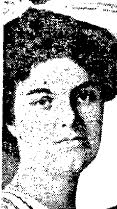 18-year-old Ruth Cruger went missing in 1917.
18-year-old Ruth Cruger went missing in 1917.
Mr. Cruger was so upset by the ineptitude of the department that he demanded Mayor Mitchel fire the police commissioner for “stupidity.” In defense of Woods, whom Mitchel admired, the mayor said, “Sound judgment cannot be predicated upon an isolated act or omission, unfortunate and deeply regrettable as that omission may have been.”
A grand jury convened by Swann to look into the matter revealed that what had happened went well beyond mere incompetence on the part of the police. It turned out that Cocchi had developed a cozy relationship with the same motorcycle officers who had vouched for him, which explained why detectives had failed to consider him a suspect from the start.
Whenever these particular motorcycle patrolmen issued a summons for a traffic infraction, they directed the violator to go to Cocchi’s shop to “settle up” rather than court. That way the fines, from which Cocchi received his cut, could go directly into the patrolmen’s pockets instead of the city treasury.
The debacle led to the creation of the NYPD’s Bureau of Missing Persons, which is still in existence today, albeit now called the “Missing Persons Squad.” As for Cocchi, he eventually confessed to Italian authorities that he had murdered the teenager because she had resisted his advances. The Italian courts sentenced him to 27 years in jail, bringing an end to one of the most embarrassing chapters in NYPD history.
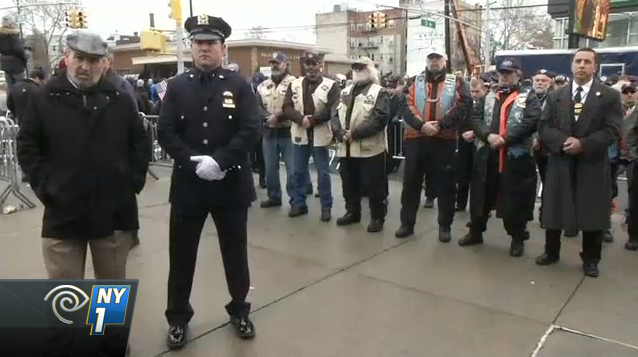 Video from NY1. The current turmoil between the NYPD and City Hall has a long history.
Video from NY1. The current turmoil between the NYPD and City Hall has a long history.
Excerpted with permission from The NYPD’s First Fifty Years: Politicians, Police Commissioners, and Patrolmen by Bernard Whalen and Jon Whalen with a foreword by William J. Bratton, Potomac Books, January 2015
Bernard Whalen has been a member of the New York Police Department since July 1981. He has received 16 departmental recognitions, including two commendations. He is a member of the NYPD Honor Legion. He and his father, Jon Whalen, a former New York state corrections officer and retired English teacher, coauthored the novel Justifiable Homicide. William J. Bratton is the police commissioner of the NYPD.
The awards season continues with the 2014 Agatha nominees.
The winners will be announced at the Agatha Awards Banquet on May 2, 2015.
Congratulations to all of the nominees.
Best Contemporary Novel
The Good, the Bad, and the Emus by Donna Andrews (Minotaur Books)
A Demon Summer by G.M. Malliet (Minotaur Books)
Truth Be Told by Hank Phillippi Ryan (Forge Books)
The Long Way Home by Louise Penny (Minotaur Books)
Designated Daughters by Margaret Maron (Grand Central Publishing)
Best Historical Novel
Hunting Shadows by Charles Todd (William Morrow)
An Unwilling Accomplice by Charles Todd (William Morrow)
Wouldn't It Be Deadly by D.E. Ireland (Minotaur Books)
Queen of Hearts by Rhys Bowen (Berkley)
Murder in Murray Hill by Victoria Thompson (Berkley)
Best First Novel
Circle of Influence by Annette Dashofy (Henery Press)
Tagged for Death by Sherry Harris (Kensington Publishing)
Finding Sky by Susan O'Brien (Henery Press)
Well Read, Then Dead by Terrie Farley Moran (Berkley Prime Crime)
Murder Strikes a Pose by Tracy Weber (Midnight Ink)
Best Nonfiction
400 Things Cops Know: Street Smart Lessons From a Veteran Patrolman by Adam Plantinga (Quill Driver Books)
Writes of Passage: Adventures on the Writer's Journey by Hank Phillippi Ryan (ed.) (Henery Press)
Death Dealer: How Cops and Cadaver Dogs Brought a Killer to Justice by Kate Flora (New Horizon Press)
The Art of the English Murder by Lucy Worsley (Pegasus Books)
The Poisoner: The Life and Crimes of Victorian England's Most Notorious Doctor by Stephen Bates (Overlook Hardcover)
Best Short Story
“The Odds Are Against Us” by Art Taylor (EQMM)
“Premonition” (Chesapeake Crimes Homicidal Holidays) by Art Taylor (Wildside Press)
“The Shadow Knows” (Chesapeake Crimes Homicidal Holidays) by Barb Goffman (Wildside Press)
“Just Desserts for Johnny” by Edith Maxwell (Kings River Life Magazine)
“The Blessing Witch” (Best New England Crime Stories 2015: Rogue Wave) by Kathy Lynn Emerson (Level Best Books)
Best Children's/Young Adult
Andi Under Pressure by Amanda Flower (ZonderKidz)
Greenglass House by Kate Milford (Clarion Books)
Uncertain Glory by Lea Wait (Islandport Press)
The Code Busters Club, Case #4: The Mummy's Curse by Penny Warner (Egmont USA)
Found by Harlen Coben (Putnam Juvenile)
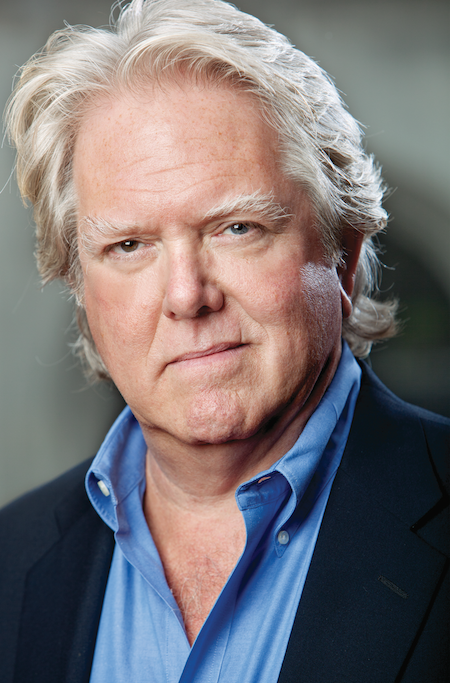 Photo: ©2011 Rod Goodman
Photo: ©2011 Rod Goodman
When I was very young, I dreamed of one day having a job reading. My mother, who always encouraged my voracious and eclectic taste in books, introduced me to the New York Times Book Review. “Look at all these people who get paid to read and write about books,” I thought. “I could do that!”
Years passed and I became quite adept at writing book reviews. I wish I still had them; I’d love to see what I once wrote about Freddy and the Baseball Team From Mars (“Not the best in Walter Brooks’ series, featuring the sensible Freddy the Pig, but an interesting addition. Taken as a whole, these books will provide a discerning reader with all the lessons of life in an admirably entertaining package.”) or whether Thurber’s Fables for Our Time held up 20 years after publication. (It did.)
Somewhere in there was the nugget of an idea that writing, the constant second-best to reading, might be something that I could do with my life other than sailing (which I already realized paid even less than writing) or lying on a beach (I did lifeguard for a few summers, which was as close as I got). At some point I was introduced to the concept of the slush pile and for a while I held aspirations of someday rising to the lofty level of a slush-pile reader. Having a sense now of what that truly entails, I genuflect to every intern who has spent a summer reading manuscripts and dashing the dreams of scores of scribblers.
Along the way, I tried any number of ways of avoiding a writing career. I played guitar in a rock band, I acted upon the stage, I waited tables, I tended bar, then I went to grad school and worked on Wall Street for 20 years or so. All so that I would not have to plunk my butt in a chair and just “write the damn book already!”
I am no longer an accomplished procrastinator, though I admit that I have gone so far as to balance the checkbook rather than finish writing a difficult scene. Somehow the discipline of working hard has over the years become a habit that is hard to break. Given the opportunity to lie on a beach or sail a boat, I find that I am often plotting the next chapter or re-imagining the motive of a character. I am writing and I am having the time of my life.
After receiving an MBA from Columbia University, Michael Sears spent more than 20 years on Wall Street, rising to become the Managing Director in the bond trade and underwriting divisions of Paine Webber and, later, Jeffries & Co. Heeding his father’s advice: “When it stops being fun, get out,” Sears left the business in 2005 and returned to what had always given him the greatest joy – writing. Studying at NYU and the New School, he published his first novel at 61, Black Fridays, which was nominated for the Edgar, Anthony, Barry, Shamus, and ITW Thriller Award, winning the Shamus. His second in the acclaimed series, Mortal Bonds, was published in 2013 and won the Silver Falchion Award for Best Crime Thriller. Sears lives in Sea Cliff, New York, with his wife, artist Barbara Segal.
This "Writers on Reading" essay was originally published in "At the Scene" eNews February 2015 as a first-look exclusive to our enewsletter subscribers. For more special content available first to our enewsletter subscribers, sign up here.

Bosch—the new series based on Michael Connelly’s novels that begins streaming on Amazon Prime on February 13—hits the ground running, literally, as a street chase across downtown Los Angeles ends with a shooting.
This chase, in which L.A. police detective Harry Bosch follows a man he suspects of killing prostitutes, kicks off the TV series. But Bosch—much like Connelly’s 19 novels about this cop—is a police procedural that doubles as a perceptive character study about a man with a mission to uncover the truth about crime, no matter the odds, as well as a showcase for Los Angeles.
Bosch certainly will have its share of chases and guns—as needed—but the four episodes I viewed in advance of the February 13 launch concentrate more on the essence of the character and on the City of Angels. It starts with Harry—expertly performed by Titus Welliver—following the suspect through the streets, past Angel’s Flight, down into the subway and through Mariachi Plaza, all of which Connelly has written about in his novels.
And while Bosch doesn’t break new ground in the already overcrowded field of television crime drama, it operates on a higher plane than most series. The well-constructed episodes, which draw from several Connelly novels, are tightly focused, but it is Harry—his angst, his rage, his compassion—that keeps Bosch spinning.
Bosch gives us the Harry Bosch that readers have been waiting for. The series keeps the spirit of Connelly’s novels—helped, in some instance, by the author also writing some of the screenplays—and doesn’t stray too far from the source material. (Connelly, who also is listed as executive producer, shares a writing credit for the fourth episode’s teleplay with crime writer George Pelecanos, who also co-wrote some episodes of The Wire.)
And when the detective walks out on his balcony, surveying the city that he protects, a vital scene in each novel, viewers will know that they are home with Harry.
Yes, there are some differences between the Harry of the novels and the Harry on the screen. But these changes make sense and keep the contemporary feel of the series. In the novels, Harry is a Vietnam vet, and ages. That works for the novels, but a TV series needs an immediate feel.
So now Harry is about 47 years old, a cop for about 20 years. He fought in the first Gulf War during 1991 where he was Special Forces, part of the team that cleared the tunnels. (Long-time readers will remember that Harry often was down in the tunnels in Connelly’s Edgar-winning debut, The Black Echo.) In the TV series, Harry re-upped with the Army following 9/11, serving in Afghanistan, and back to the tunnels, and then back to the police force. In the TV series, Harry also has a daughter who lives in Las Vegas with her mother.

The initial episodes—and I think this will continue through the first season—draw from Connelly’s novels City of Bones and The Concrete Blonde. Several plotlines run through the episodes, making Bosch realistic since detectives often juggle several investigations at one time.
The beginning chase in which Harry shoots the suspect is a flashback. Two years later, Harry is being sued in a civil case for wrongful death by the suspect’s wife, despite being cleared by the department. The plaintiff’s lawyer, Honey “Money” Chandler (Mimi Rogers), claims that Harry planted a gun on the suspect.
Although he is not supposed to be on active duty, Harry can’t just sit around, so he maneuvers to take the weekend shift of two other detectives. He’s called to investigate the human bones found by a retired doctor’s dog in the woods.
The bones turn out to be those of a 12-year-old boy who was horribly abused, murdered during the late 1980s, and buried in the woods. The investigation leads Harry to a serial killer who has remained off the grid for a long time.
Longtime readers will recognize the different plot threads and certain twists from the novels. But it’s been several years since these novels were published and it’s easy to forget what exactly happened and to whom, and reading the novels won’t spoil the viewing.
Bosch has assembled a good cast. Rogers is steely as the never-lose attorney and Jason Gedrick is frightening as a killer. Look for a bearded Scott Wilson (Walking Dead, In Cold Blood) as the doctor whose golden retriever finds the bone.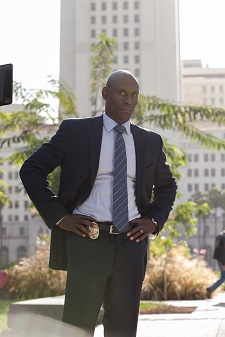
But it is Titus Welliver’s performance that elevates Bosch. Although for some reason, I always pictured Harry with dark hair, any preconceived idea of what Harry should look like soon vanishes because Welliver quickly owns the role. Welliver has long been one of the best character actors around, whether he is in Deadwood, The Good Wife, Sons of Anarchy, or the Comcast commercials. Welliver’s range of emotions does justice to Harry Bosch, showing all the colors of this detective.
Welliver’s chemistry with Jamie Hector as his partner Jerry Edgar works well. Hector (Marlo of The Wire) and Welliver are believable as detectives and their realistic banter brings a levity to Bosch. Hector proved his range in The Wire, and he continues to show his acting chops in Bosch.
Lance Reddick, also from The Wire, is the epitome of a man of power as Irvin Irving. Amy Aquino, long a personal favorite, nails Lt. Grace Billets.
As in the novels, Los Angeles is as vital a character as any actor. Bosch shows us the city that Connelly writes about, from the opening aerial scenes to the dry Los Angeles River to the nooks and alleyways.
For many viewers, Amazon Prime is still a new way to watch television. But the quality of alternatives to network television has been attracting viewers—and awards. Being on Amazon Prime didn’t stop Transparent from picking up two Golden Globes and a slew of nominations in January. And Amazon Prime won’t stop Connelly’s fans from seeking out this superior crime drama.
All 10 episodes of Bosch will begin streaming on February 13, 2015, on Amazon Prime Instant Video in the USA and the UK. For details on viewings, visit michaelconnelly.com.
Photos: Top, Titus Welliver; second photo, Titus Welliver, Jamie Hector; third photo, Amy Aquino; fourth photo, Lance Reddick. Photos courtesy Amazon Prime
TWISTED INNOCENCE
by TERRI BLACKSTOCK
This email address is being protected from spambots. You need JavaScript enabled to view it.This email address is being protected from spambots. You need JavaScript enabled to view it.
Please include your full name and US mailing address.

The third and final book in Terri Blackstock's Moonlighters trilogy is now out! And you can win a signed copy.
Holly Cramer’s past choices have finally caught up to her, but she never expected them to endanger her baby.
Holly was a party girl, but she longs to live a more stable life for her daughter. When police investigating a drug-related murder case show up to question her about the whereabouts of Creed Kershaw, Lily’s father, Holly's own search for her former lover puts her and her daughter in danger when Crenshaw takes them hostage.
As desperate hours tick by, dangers old and new threaten Holly and her baby, and lives are demanded as sacrifices for love. Through a complex web of mistakes and regret, redemption is the one hope Holly has left to hold on to.
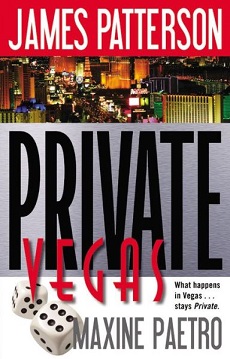
Not too long ago, it wasn’t uncommon for authors and publishers to occasionally add “gimmicks” to the packages of books sent to reviewers.
I well remember the time when I opened a box containing a mystery set around the Fourth of July only to have large pieces of glitter spray from the package. I was not a happy camper as the glitter landed on my dress, in my hair, and all over my desk. I was still finding glitter hidden on my desk on the day I left the newspaper.
And then there was the time I was at the newspaper around 10 at night, finishing up the weekly entertainment section. A box containing a book was rigged so that when it was opened fake spiders and netting made to resemble a web sprang out. I was even less thrilled.
So I thought the days of gimmicks were—fortunately—over.
But leave it to James Patterson to come up with a new idea.
If you have $300,000, you can buy his new novel Private Vegas and have quite an experience, too.
OK, to be fair, it won’t cost you $300,000—only $294,038.
For that, a reader—and, yes, only one reader—will get a copy of Private Vegas that will self-destruct 24 hours after the buyer begins to read it.
So better read fast!
The price tag, according to the website, also comes with a first-class flight to an undisclosed location, two nights’ stay in a luxury hotel, “a splendid reading space including perfectly chilled Champagne,” a pair of “gold, not golden” binoculars inside a fine-leather case engraved with Patterson's initials, and a five-course dinner with Patterson.
The buyer also will receive the autographed Alex Cross book series.
And if you prefer mixed drinks to Champagne, apparently that can be arranged. I would hope so. That much money would buy a lot of Grey Goose.
Details of how the book will be exploded are secret but it will involve a bomb squad. The video is pretty funny as it explains what may happen.
Only one “James Patterson Self-Destructing Book Experience” will be sold on “a first-come, first-served basis” and it is only for one person, according to the website.
The website also makes this statement: “We will use reasonable efforts to ensure the Experience is a happy and memorable one for you and your fellow guests for all the right reasons, however we cannot be liable for distress caused by circumstances beyond our control (including but not limited to the weather conditions).” There also are a lot of other terms and conditions.
So who would pay that much money for this experience?
Who knows.
Representatives of Little, Brown, his publisher, have stated that Patterson has friends who would not bat an eye at that price. And of course, what a conversation starter that “experience” would be.
OK, this is an interesting idea, but since it was announced on January 20, no one has bid on this book.
And for those of us who don’t have that kind of cash lying around the house, a regular old non-destructive copy of Private Vegas, which lists Maxine Paetro as co-writer, is available for under $30 in hardcover and as an e-book.
Patterson will be the guest speaker during Sleuthfest, the annual writers’ conference sponsored by the Florida chapter of the Mystery Writers of America.
Sleuthfest is February 26 to March 1 in Deerfield Beach, Florida, just a little north of Fort Lauderdale.
And remember, Sleuthfest is in Florida and it is February.
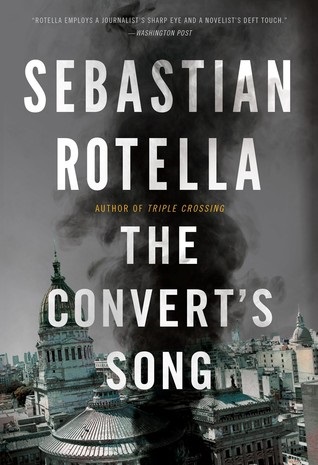
Fact and fiction often merge when journalists also write thrillers.
Sebastian Rotella has woven reality into his two excellent novels, The Convert’s Song, which came out December 2014, and his 2011 debut Triple Crossing.
As a journalist, Rotella specializes in covering national security and terrorism. His reporting about Muslims in Europe was chosen as a Pulitzer finalist.
He also wrote about the Paris cell to which the Kouachi brothers who committed the murders at Charlie Hebdo belonged.
The Kouachi brothers were from the 19th arrondissement and trained in the Buttes-Chaumont park, where a scene takes place in The Convert’s Song (Little, Brown).
Recently, Rotella published a piece on ProPublica on Argentine conspiracies and Alberto Nisman, the Argentine special prosecutor whose mysterious death has made international headlines and left Argentina in turmoil.
Nisman was investigating a terrorist bombing that killed 85 people at a Jewish community center in Buenos Aires in 1994.
Rotella’s The Convert’s Song looks at that merging of organized crime, Islamic terrorism, law enforcement, and intelligence services. The Convert’s Song explores the psychology and motivations of Islamic extremists and counterterror warriors.
In The Convert’s Song, Rotella sets private investigator Valentine Pescatore on a dangerous new journey—from Buenos Aires to the jungles of South America, from Paris to Baghdad. Pescatore must capture a deadly international terrorist, who just may be his closest childhood friend, before he strikes again.
Pescatore’s friend, a charming, failed musician who has converted to Islam, is suspected of an attack on a shopping mall. But is he really the suspect…a spy…or just a scam artist?
Rotella will discuss his work at 6:30 p.m., February 20, at the Mysterious Bookshop in New York City.

First, if you have not watched Breaking Bad—and really, what are you waiting for?—get yourself to Netflix or On Demand or whatever and start binge-watching now.
Only after you’ve seen the entire five seasons of Walter White going from high school chemistry teacher to meth kingpin should you read this column, or, more importantly, watch the new AMC series Better Call Saul.
Better Call Saul isn’t a sequel to Breaking Bad but a prequel, taking place six years before Saul Goodman signed on to represent Albuquerque’s most notorious criminal.
Walter White and Jesse Pinkerman are nowhere near the new series; Jesse would still have been in high school, wondering, no doubt, how that lame chemistry class taught by Mr. White would ever be useful.
Six years before, Saul Goodman didn’t exist yet. Instead, the lawyer who would be known as Saul Goodman was still called by his birth name, Jimmy McGill, a small-time attorney with a bleak future and almost no clients.
Breaking Bad was about how a man loses his soul as he builds a drug empire. Better Call Saul shows a man at odds with the intersection of morals and ambition.
At the end of Breaking Bad—spoiler alert—Saul Goodman predicted that “the best-case scenario” for his tenuous future would be as manager at a Cinnabon in Omaha, Nebraska.
And in a black-and-white prologue, that is exactly what Saul is doing—rolling out the dough, putting out the Cinnabon sign in the mall, sweeping up, and constantly looking over his shoulder, worried that somehow, someday, the criminals from Arizona will find him.
At night, Saul drinks alone in his apartment and, for fun, watches the cheesy television commercials he made for his law practice back in the day.

The series then begins to show the maturation of Jimmy McGill, whose practice is so low-rent that his office is in the back of a nail salon, next to the utility room. It’s also where he sleeps.
While the first episode of Better Call Saul sets up the premise, it is the second episode that kicks into high gear and shows that Jimmy McGill really was a good lawyer.
No, make that an excellent lawyer. His negotiation on behalf of two “clients” during a tense standoff in that second episode is sheer brilliance.
Jimmy also has a brother, Chuck, who is forced to leave his job at his high-powered law firm, Hamlin, Hamlin & McGill, due to the sudden onset of what Chuck describes as electromagnetic hypersensitivity.
No one respects Jimmy, not the woman who owns the nail salon and not even his brother for whom he is the only lifeline to the outside world. Jimmy, of course, hasn’t quite learned to respect himself.
Is Better Call Saul as brilliant as Breaking Bad?
No.
Breaking Bad set a standard that comes just under The Wire.
But Better Call Saul is good—darned good—and it has the potential to develop into a great series.
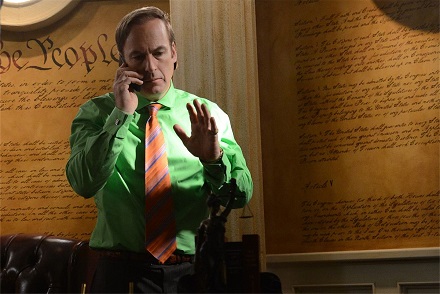
That quality is due to the fact that Better Call Saul is created by Vince Gilligan and Peter Gould, the team behind Breaking Bad.
But more importantly, Better Call Saul has Bob Odenkirk reprising his role.
Odenkirk has always been a brilliant actor as well as a comedian. He has been able to immerse himself into his roles so that he often is unrecognizable, as in last year’s TV series Fargo. Odenkirk makes us care about the man who will be Saul, sad over Jimmy’s current state and cheering him when he shows his mettle.
Odenkirk has been a longtime personal favorite, going back to the days of the HBO sketch comedy series Mr. Show With Bob and David.
While Saul often was the comic relief in Breaking Bad, Better Call Saul is definitely a drama with bits of gallows humor here and there. Odenkirk shows how hungry Jimmy is for that one break, yet how he tries to do the right thing.
But Jimmy knows that ambition will win over in the end.
Better Call Saul also will show how Jimmy met Mike Ehrmantraut (Jonathan Banks), the ex-Philadelphia cop who would become Saul’s private investigator.
There also is one other returning character from Breaking Bad, but that person’s arrival is a wonderful surprise, and I don’t want to spoil that for you. At this point, no one else from Breaking Bad has been signed up to appear in Better Call Saul, though there is talk that a couple of characters may make cameos. Albuquerque can be a small city!
The first season of Better Call Saul is off to a great start and a second season already is in the works.
Better Call Saul? Yes, you should.
Better Call Saul airs at 10 p.m. Mondays on AMC.
Photos: Bob Odenkirk in Better Call Saul. AMC photos
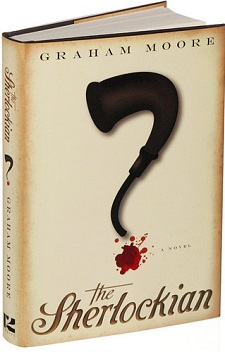
When Graham Moore accepted his Oscar for The Imitation Game for best adapted screenplay, his speech wasn’t the usual thank you.
Instead, the 33-year-old screenwriter spoke of his bout with depression and of his suicide attempt at age 16. His message to those who also have depression was simple: “Stay.” Stay who you are.
A message that everyone should take to heart.
Before Moore became a sought-after screenwriter, he also was a mystery writer.
His novel The Sherlockian was published in 2010 and went on to become a New York Times bestseller.
The Sherlockian alternated between two time periods—a conference for Arthur Conan Doyle fans set in the present day and Doyle’s attempts to aid a Scotland Yard investigation in the year 1900.
In my review of The Sherlockian, I said: “The Sherlockian works as an insightful look at the rise of celebrities, extreme fans, and a character who continues to be bigger than life as well as a testament to the power of storytelling.”
My review later stated: “Moore smoothly delivers an evocative view of late-19th century London as well as its 21st century version. . . . Doyle would be proud of Moore’s ingenious The Sherlockian. So would Holmes. As will any fan of the Holmes canon.”
I also named The Sherlockian as one of the best debuts of 2010 and said, “The game’s afoot as Arthur Conan Doyle in the 19th century tries to prove he is more important than his creation Sherlock Holmes while a 21st-century Holmes devotee tries to solve the murder of a Holmes expert.”
Moore’s next project is to be the film adaptation of Erik Larson’s 2003 nonfiction The Devil in the White City, which is supposed to star Leonardo DiCaprio.
Moore isn’t the only mystery writer to transition to screenwriting and win an Oscar for his efforts.
John Ridley’s script for 12 Years a Slave won the 2014 Academy Award for best adapted screenplay, making Ridley the second African American to win the award.
Ridley wrote some terrific, hard-edged novels including Everybody Smokes in Hell, Stray Dogs, Love Is a Racket, and What Fire Cannot Burn. These were edgy novels about people on the margins of society.
Great movies from very good mystery writers.
Some people are just overachievers. Take, for example, Tess Gerritsen, who is our cover interview. First she became a doctor, then a bestselling novelist. Her popular series of novels featuring Boston homicide detective Jane Rizzoli and medical examiner Maura Isles inspired the hit TNT television series Rizzoli & Isles starring Angie Harmon and Sasha Alexander.
Michael Sears had two careers before moving on to writing novels—first as an actor and then as a Wall Street trader. His financial thrillers—Black Fridays, Mortal Bonds, and the new Long Way Down—offer a tour of New York’s financial district with a distinctly dramatic flair.
Speaking of drama, in this issue, Oline Cogdill reviews the new Amazon streaming series Bosch, based on Michael Connelly’s bestselling novels. There are a lot of interesting new shows popping up on the various streaming services such as Amazon, Netflix, Hulu, and Acorn. In some cases, these new venues are rescuing beloved shows that aren’t commercially successful enough for network or cable television. For instance, late last year Netflix stepped in to save Mystery Scene readers’ favorite Longmire when it was cancelled by A&E. Shooting for a 10-episode fourth season is now underway and the western crime drama will return in the latter half of 2015. Also, we’re delighted to report that Acorn TV will be offering a new season of the excellent Foyle’s War.
In the next issue we’ll have a round-up of interesting new and rescued crime shows and where to find them. Stay tuned!
Kate Stine
Editor-in-chief
Features
Tess Gerritsen
The author of the Rizzoli and Isles thrillers talks about women in the workplace, the power of female friendship, and the benefits of an outsider’s viewpoint.
by Oline Cogdill
Wilkie Collins: Father of the Modern Detective Novel
Wildly successful in their day, The Moonstone and The Woman in White remain surprisingly modern in tone and outlook.
by Michael Mallory
Trial Runs
Recent legal thrillers sure to get your pulse pounding.
by Jon L. Breen
Michael Sears
Decades on Wall Street have given this author plenty of material to fuel his fast-paced, colorful financial thrillers.
by Oline H. Cogdill
2014 Fave Raves
Our critics’ choose their favorite criminous entertainments of 2014.
Gormania
Bill Pronzini and Marcia Muller have teamed up for a rip-roaring historical mystery series set in San Francisco of the 1890s.
by Ed Gorman
The Harry We’ve Been Waiting For
The new Amazon series Bosch based on Michael Connelly’s L.A. cop.
by Oline H. Cogdill
“The Belle of Bulletmore’ Crossword
by Verna Suit
Departments
At the Scene
by Kate Stine
Mystery Miscellany
by Louis Phillips
Hints & Allegations
Macavity Awards, Barry Awards, Anthony Awards, Private Eye Writers of America Shamus Awards, British Crime Writers Association Dagger Awards, Part II
New Books
Wrongful Death
by L.J. Sellers
The Hook
First lines that caught our attention
Reviews
Small Press Reviews: Covering the Independents
by Betty Webb
Short & Sweet: Short Stories Considered
by Bill Crider
What About Murder? Reference Books Reviewed
by Jon L. Breen
Very Original: Paperback Originals Reviewed
by Lynne Maxwell & Hank Wagner
Sounds of Suspense: Audiobooks Reviewed
by Dick Lochte
Mystery Scene Reviews
Miscellaneous
The Docket
Letters
Our Readers Recommend
Advertiser Info
 Homeless twins inspire a story and a charity
Homeless twins inspire a story and a charity
On the streets of Eugene, Oregon, walk two brothers—tall, dark, and bone thin—identical homeless twins, pushing their carts, overflowing with empty cans and meager personal belongings. One walks with a limp, but he’s still out there every day with his brother, often until dark, picking up cans and bottles to recycle for cash. For them, it’s a job that buys food and toiletries, but at the end of their long work day, they have no place to call home.
They’ve been in my neighborhood for years, and I wanted to know their story. But there are 1,700 other homeless people in my hometown, and they all have stories. In 2013, when my novels found a bigger readership and my fortune changed for the better, I decided to get involved in the homeless issue and make a small difference if I could. I also realized that rather than discovering the twins’ real background, it was more important to write their story—a fictionalized account of how vulnerable homeless people are to crime and how unprotected they are by the justice and social systems. In fact, the homeless are often victimized by the courts and law enforcement personnel.
But for every officer who is quick to land a blow because a vagrant doesn’t move quickly enough, there are others in uniform who collect blankets and warm clothes for the homeless every winter and pass them out at the first sign of frost. Sometimes those impulses exist within the same law enforcement officer. I wanted to show those dichotomies in my story as well. So Wrongful Death, the tenth book in the Detective Jackson series, features a benevolent police officer who is killed—seemingly at the hands of a homeless man he was trying to help. In the story, the homeless community rallies to defend the street twin, and Jackson’s investigation is sidelined by protests and riots that threaten to get out of control.
The issues in Wrongful Death reflect the reality of street life in Eugene. Although the city has opened camps and established warming centers for cold nights, it’s never enough. Some people are chronically homeless because of mental illness or addiction issues. Others are temporarily homeless because of a financial setback. Those people are the easiest to help.
So as I plotted this story, I founded Housing Help, a charity dedicated to keeping families from becoming homeless. Its mission is simple: When a family faces eviction because of a short-term financial situation, Housing Help pays the rent to keep them in their home, sparing the children the emotional and educational setbacks that go along with displacement.
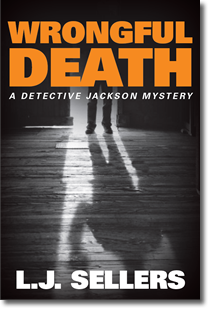
Research shows that most minimum-wage employees are one check away from homelessness. The most common reason for becoming homeless? Car trouble. A family spends the money to fix the car so the provider can get to work and keep their job, then they can’t pay the rent. Research also shows that keeping people in their homes—by paying a month’s rent or getting the car fixed—is much more cost effective than trying to help a family after they’re on the street.
So that’s what Housing Help does. It connects with families in need and helps them through a temporary financial crisis so they can keep their housing. Last year, Housing Help assisted six families, and we hope to do much more this year. To make that happen, I’ve dedicated a portion of the income from Wrongful Death to the charity.
Social issues always play a part in my crime fiction, but this Jackson story hits home for me more than anything else I’ve written. I still don’t know the street twins’ real story, but by writing about the broader issue, I’ve come to understand and support homeless people in a way I never expected.
In 1982, 11-year-old Evie Jones’ best friend Lianne Gagnon abruptly disappeared. Several weeks later, her body was discovered lying face down in the mud in a local park. Her death was deemed a homicide, but her alleged killer, who police publicly identified as local Robert Cameron, was never apprehended.
Cut to 1993. Evie now works as a rookie crime beat reporter for a major Toronto newspaper. Assigned to gather background material on a new series of sex crimes, she uses the paper’s resources (including a newfangled news service called LexisNexis) to obsessively pursue a private investigation into her friend’s cold case. Doing so, the likable and endearing heroine discovers some disturbing new facts concerning Lianne’s case, which lead her to believe that the killer may still be living nearby. Unfortunately, it also appears as if her investigations have caught the killer’s attention, as she senses a stalker dogging her footsteps.
The fact that this is Elisabeth de Mariaffi’s first novel is remarkable. She writes with great assurance and style, creating a sense of menace and paranoia so pervasive it virtually demands that you read “just one more chapter” before reluctantly turning in for the night. One chapter leads to another, and, before you realize it, you’ve raced to the end of this engaging and edgy thriller.
Georgiana “Georgie” Kendrick has always led a happy life; she lives with her wealthy parents in a lovely Boston neighborhood, she attends a private school, and enjoys practicing her oboe in hopes of becoming a professional musician. But when her heart fails unexpectedly and she receives a transplant, Georgie remembers things that never happened to her and she recognizes people she’s never met. Before long, Georgie realizes that she is remembering scenes from her heart donor’s life. And with each memory she gains from the donor, the more of her own memories she loses.
Initially, all Georgie knows about her donor is that she was a teenage girl whose body was left unclaimed. But when she looks deeper, she discovers the donor—only known as Annabel—had been living on the streets, was forced into prostitution, and committed suicide by leaping from a balcony. Georgie begins traveling into the poorest areas of Boston to find out what she can about Annabel—and figure out how to stop Annabel’s memories from replacing her own. She encounters a world where homeless teen girls are trafficked into the sex trade. Georgie also meets Nate, a young man trying to help the trafficked girls, and falls in love. But when she learns Annabel was actually murdered, love takes a backseat as Georgie and Nate work to figure out who killed Annabel—before Georgie loses her own memories entirely.
Nicole Maggi’s The Forgetting doesn’t shy away from tough subjects such as organ donations, child trafficking, and murder. The reader experiences, alongside Georgie, the survivor’s guilt that comes from living with the heart of a deceased person. The reader experiences the hopelessness Georgie and Nate feel when they worry about the girls they meet on the street, and Georgie’s fear as she gets closer to finding Annabel’s killer. But the reader also feels the stirrings of Georgie’s love for Nate, the sense of purpose she feels when looking for the murderer, and the peace that calms her when she practices her oboe.
As Georgie tries to reconcile her friends, family, and career dreams with her new experiences, she finds herself searching for more than a killer—Georgie finds she is searching for meaning in her own life. A suspenseful mystery involving love, identity, justice, and purpose, The Forgetting will surpass the highest expectations readers have.
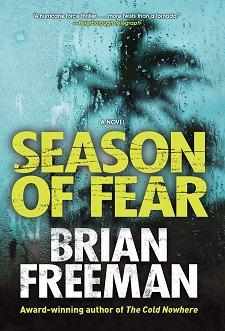
South Florida often is the locale of choice for mystery writers. And indeed the east coast of Florida seems to have a large number of published mystery writers.
Of course, Randy Wayne White owns the Gulf Coast of Florida, especially the Sanibel/Captiva area, and P.J. Parrish has given us a peek at the Fort Myers region.
But this month boasts two novels set in the Tampa environs, and this is good news for mystery readers.
Florida—the state I have called home for a long time—is more like several states, with each part of the Sunshine State different from the other. Sometimes I think all we share are the heat and the eccentric criminals.
Brian Freeman’s Season of Fear is set in Tampa, around the Florida gubernatorial race. The action takes us from Tampa to Clearwater to Lake Wales, a place I have never seen in a mystery.
Season of Fear nails the Tampa area, taking us to some of its landmarks, neighborhoods, and breathtaking vistas.
Freeman's hero in Season of Fear is Cab Bolton, who is on a brief leave from his job as a police detective in Naples, Florida. Naples is a great little town, full of lovely restaurants and good shopping.
When my friend Toni is down, we always head to Naples to spend the day. It’s only 90 miles away from Fort Lauderdale and we make it a day trip. I would love to see a mystery set in Naples.
Dennis Lehane wraps up his trilogy about crime in the early part of the 20th century with World Gone By, set in the Tampa of the early 1940s.
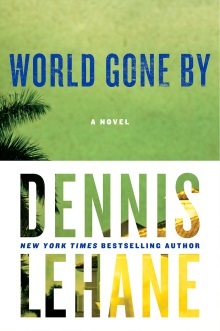
Lehane perfectly illustrates how Florida was during the 1940s, when urban sprawl was a fantasy and Ybor City was the district for Tampa’s Latin population.
World Gone By takes the reader to the city’s docks, its various underworlds, and its politics.
World Gone By concludes Lehane’s trilogy that began with The Given Day (2008). The novel picks up the story of Joe Coughlin in 1942, a decade after the events in Lehane’s Edgar Award-winning Live by Night (2012).
Florida has few landmarks that last through the decades. One of the jokes down here is that while there are some things that are more than a hundred years old, most of our “historical” sites seem to have sprung up during the 1940s.
But Freeman and Lehane both show a few places in common, despite the decades separately the stories.
Both novels make a trip to the terrific Columbia Restaurant that is still going strong in Tampa’s Ybor City. Often called Florida’s oldest restaurant, the Columbia was established in 1905.
Of course Freeman and Lehane aren’t the only ones to have written about Tampa.
Ace Atkins delved into Tampa history with his White Shadow (2006) about the death of mob boss Charlie Wall during 1955.
In my review of White Shadow, I said: “It’s 1955 and corruption seeps through the streets of Tampa. Sicilian and Cuban criminals vie for control of the city while leaders of each group also have plans for casinos in Havana. The strong community of Ybor City is fragrant with its cigar factories, but also marred by gangsters. It’s a toss up over which group is worse – the criminals or the crooked police force. Everyone – whether upstanding citizen or crook – has his eye on a young Cuban revolutionary named Fidel.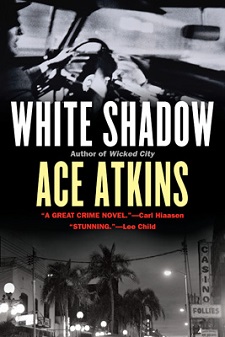
Then the retired bootlegger and gambler Charlie Wall is bludgeoned in his home. The old kingpin nicknamed White Shadow once ruled Tampa and tales of his underground tunnels where shipments of rum were unloaded are still discussed.”
White Shadow also features a side trip to Gibsonton, a town where those who worked in carnival side shows settled, adding an intriguing glimpse into one of Florida’s secret enclaves.
Atkins had a string of excellent historical novels with various settings before he began his series about Mississippi sheriff Quinn Colson and his continuation of the Robert B. Parker Spencer novels.
And yes, the Columbia restaurant is in White Shadow.
Now, I can’t wait for a trip to Tampa…and dining at the Columbia.
Drawing Conclusions by Deirdre Verne is an aptly titled novel since its protagonist, CeCe Prentice, is an artist and keen observer of personality traits. She lives an unconventional lifestyle as a freegan, embracing an environmentalist credo that includes scavenging leftover food found in dumpsters.
CeCe’s devout determination to shrink her environmental footprint rankles her father, the wealthy and esteemed geneticist Dr. William Prentice. He disinherited CeCe when she turned 18, lavishing all his attention on her fraternal twin brother, Teddy.
Ten years later, Teddy dies while at work in their father’s genetics facility. There are no overt signs of foul play, but Teddy was young and healthy, and his death suspicious. While mourning her brother’s death, CeCe is also threatened and Detective Frank DeRosa is assigned to protect her. They soon become allies in unraveling the mystery of her sibling’s demise.
Author Deirdre Verne imbues CeCe with intelligence and humor, and the snappy repartee between characters is delightful. The plotting, however, taxes credulity. There are multiple revelations about relationships so complex they rival the intricacies of the double helix. The science elements of genetics are well explained, but there’s an overload of information pertaining to the characters and their respective histories. Drawing Conclusions is more successful in highlighting ecological responsibility, as well as the impact and economics of genetic tampering.
Unable to resist the entreaties of an attractive young man, freshman honors student Sarie Holland agrees to give him a ride to a local food joint and, on the way, to the house of a local drug dealer, so that the boy can restock the goods he peddles to fellow students. Nothing will happen, she tells herself, and besides, the boy is cute.
Little does Sarie know that ambitious Philadelphia narcotics cop Doug Wildey has chosen that night to stake out the rundown home from which the dealer currently operates. Unable to corral the boy, Wildey does manage to snag Sarie, transforming her, in the matter of a few hours, from mousey college student to Confidential Informant 137. As such, she is plunged into a dangerous world she needs to understand quickly, or perhaps forfeit her life.
Swierczynski’s writing is sharp, and his plotting is topnotch, but it’s his feel for his characters, and Sarie in particular, that sets Canary apart from other thrillers. Sarie’s transformation from teenager to capable adult is entirely believable, and she evolves in surprising ways as she ventures ever deeper into a surreal rabbit hole where nothing is as it seems. Her very normality makes her relatable from the instant we meet her, but it’s her heretofore hidden talent for thinking on her feet that will keep readers heavily invested in her adventures until they see how things play out.
Some formulas are there for a reason: they are effective. In Loretta Ross’ first novel featuring (redheaded) auctioneer Wren Morgan, many of the traditional mystery tropes are present and accounted for, but Ross is so skillful at telling her story, you won’t mind a bit. Somehow, she makes it fresh and enjoyable. Wren encounters the interestingly named, down-on-his-luck bounty hunter Death Bogart at the police station where she’s answering questions about a body she’s found on the property of an old mansion she’s inventorying for auction. As it happens, Wren and Death are united in wanting to find a missing cache of jewels in the aforesaid old mansion—only it seems there were two sets of missing jewels. The dead man, who turns out to be a fence, was probably looking for them too. I’ll leave it to the reader to discover the reason he was naked—it’s a pip.
This is a well-told story with appealing characters. Almost everyone in the book is kind and compassionate to one another, and when they are not, that person is a pariah. Wren is a stronger-than-expected young woman, and Death, an ex-Marine who has lost everything, is at times oddly vulnerable. Together they make a good team, and Ross doesn’t waste time having them dislike one another.
Despite the story’s many familiar tropes, what is not so expected are the flashbacks of war as seen through Death’s eyes that explain his physical and mental issues (and probable PTSD), some of which he is not owning up to. What is also not expected was a somewhat needlessly violent scene at the denouement. While I know mysteries include violence, certain books lead you to expect only a certain level of mayhem. Ross exceeds her limit a tiny bit, but that’s a small caveat.
Sometimes people will ask me why I love mysteries so much, and one of the reasons, of course, is that loose ends are tied up and stories are resolved, with the bad guys brought to justice. Order is restored. Another reason are the many ways mysteries illustrate a decent way to behave in the world. Cozy mysteries are especially good at this and Ross, in her first outing, is no exception. The author thoughtfully drops a hint as to what the next book might be about in the last chapter, and I am already looking forward to it.
In Joakim Zander’s thrilling debut, a former CIA spy, a Swedish PhD student (who happens to be Muslim), and a plucky EU parliament aide all race to prevent sensitive information about America’s “enhanced interrogation tactics” in Afghanistan from reaching the wrong hands.
Of course, enhanced interrogation tactics is a fancy way of saying torture, a practice that the former spy—whose checkered career the reader glimpses throughout the narrative—both abhors and is commanded to use in the field. Scarred from a tragic event 33 years earlier in Damascus, it’s obvious that he no longer sees eye to eye with the agency.
Across the Atlantic in Sweden at Uppsala University, Mammoud Shammosh is deep into his graduate work on the privatization of war and the use of torture as an interrogation technique on detainees when he’s contacted by a mysterious source who promises him a big scoop if Mammoud agrees to meet in Brussels following an upcoming academic conference. Soon Mammoud and his ex-girlfriend Klara Walldéen, an aide in Brussels with the European Union, are plunged into a chase across Europe when it becomes clear that powerful people will do anything to make sure the leaked information stays classified.
Zander devotes more attention to writing a compelling shoot-’em-up scene than he does to fleshing out his impressive roster of main and supporting characters, but the international intrigue and the compelling subject matter—particularly given the recently released Senate Intelligence Committee report—make this a genuinely gripping read.
Page 159 of 276



